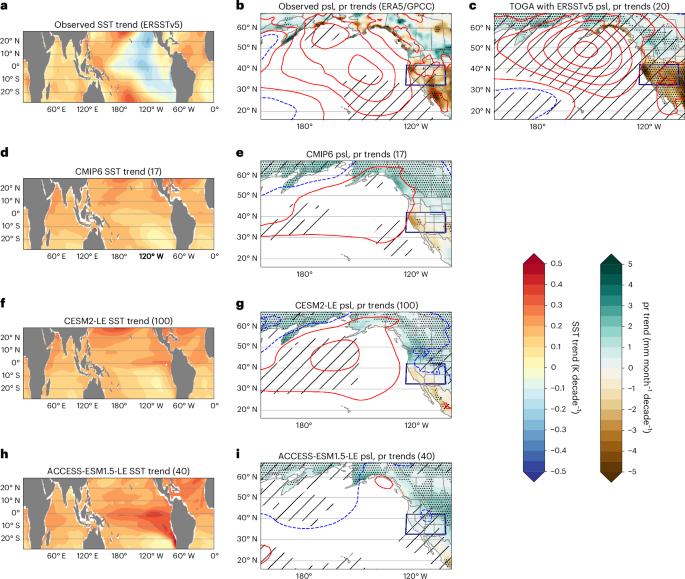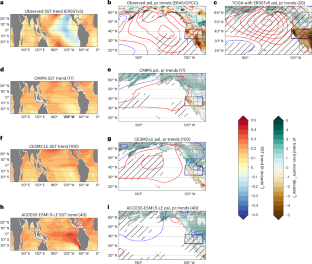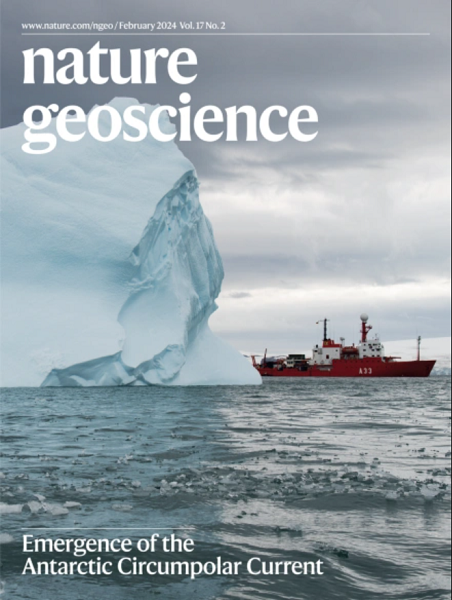最近,人为气溶胶和热带海洋变暖加剧了美国西南部的干旱
IF 16.1
1区 地球科学
Q1 GEOSCIENCES, MULTIDISCIPLINARY
引用次数: 0
摘要
自20世纪80年代降水最多以来,美国西南部目前正处于数十年的干旱中。虽然人为变暖使干旱更加严重,但冬春降水的减少对水资源和生态系统产生了更深远的影响。这种降水减少除了归因于1980年后热带海表温度的La Niña-like冷却趋势之外,还没有得到很好的理解,该趋势导致北太平洋反气旋大气环流趋势有利于美国西南部降水减少。利用模式模拟的层次,我们表明,即使在El Niño-like海面温度趋势下,也有北太平洋反气旋环流趋势和美国西南部降水减少的趋势,这与典型的El Niño遥相关相反。这种不直观但强劲的环流变化源于对热带平均海面温度变暖和人为气溶胶辐射效应的非加性响应。1980年后的时期是美国西南部土壤水分干燥速度最快的时期,这是由于这种强迫降水减少和人为变暖的共同作用造成的。虽然由于未来预测的厄尔尼诺Niño-like变暖和气溶胶排放减少,降水趋势可能会逆转,但不太可能大幅减轻目前预测的未来干旱风险。本文章由计算机程序翻译,如有差异,请以英文原文为准。


Recent southwestern US drought exacerbated by anthropogenic aerosols and tropical ocean warming
The southwestern United States is currently in a multi-decade drought that has developed since a precipitation maximum in the 1980s. While anthropogenic warming has made the drought more severe, it is the decline in winter–spring precipitation that has had a more profound effect on water resources and ecosystems. This precipitation decline is not well understood beyond its attribution to the post-1980 La Niña-like cooling trend in tropical sea surface temperatures, which caused a North Pacific anti-cyclonic atmospheric circulation trend conducive to declining precipitation in the southwestern United States. Using a hierarchy of model simulations, we show that, even under El Niño-like sea surface temperature trends, there is a tendency towards a North Pacific anti-cyclonic circulation trend and declining precipitation in the southwestern United States, counter to the canonical El Niño teleconnection. This unintuitive yet robust circulation change arises from non-additive responses to tropical mean sea surface temperature warming and radiative effects from anthropogenic aerosols. The post-1980 period exhibits the fastest southwestern US soil moisture drying among past and future periods of similar length due to the combination of this forced precipitation decline and anthropogenic warming. While the precipitation trend might reverse due to future projected El Niño-like warming and aerosol emissions reduction, it is unlikely to substantially alleviate the currently projected future drought risk. Climate model simulations suggest that both anthropogenic aerosols and tropical ocean warming have contributed to reduced precipitation over the southwestern United States in recent decades, thus making the current drought more likely than previously thought.
求助全文
通过发布文献求助,成功后即可免费获取论文全文。
去求助
来源期刊

Nature Geoscience
地学-地球科学综合
CiteScore
26.70
自引率
1.60%
发文量
187
审稿时长
3.3 months
期刊介绍:
Nature Geoscience is a monthly interdisciplinary journal that gathers top-tier research spanning Earth Sciences and related fields.
The journal covers all geoscience disciplines, including fieldwork, modeling, and theoretical studies.
Topics include atmospheric science, biogeochemistry, climate science, geobiology, geochemistry, geoinformatics, remote sensing, geology, geomagnetism, paleomagnetism, geomorphology, geophysics, glaciology, hydrology, limnology, mineralogy, oceanography, paleontology, paleoclimatology, paleoceanography, petrology, planetary science, seismology, space physics, tectonics, and volcanology.
Nature Geoscience upholds its commitment to publishing significant, high-quality Earth Sciences research through fair, rapid, and rigorous peer review, overseen by a team of full-time professional editors.
 求助内容:
求助内容: 应助结果提醒方式:
应助结果提醒方式:


